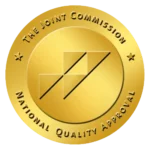The widespread global issue of opioid addiction poses health risks that affect not only people’s lives but also the well-being of society and overall economic conditions. Despite the daunting challenges, recovery is attainable. Methadone and Suboxone are both medications used in the treatment of opioid dependence and addiction.
These drugs, administered under medical care, are integral components of medication-assisted treatment (MAT), fostering recovery by stabilizing patients and diminishing the risk of relapse. It is important to understand the differences between these drugs for effective administration.
Key Takeaways
Methadone and Suboxone are medications crucial in treating opioid dependence, offering hope for recovery. Here is what you need to know about these drugs:
- Methadone acts on opioid receptors, alleviating withdrawal symptoms and cravings in a controlled manner.
- Suboxone contains two active ingredients: buprenorphine and naloxone. It is considered a safer alternative, as it has a reduced potential for misuse.
- Individual needs, the severity of misuse, and treatment goals influence the decision between methadone and suboxone use.
Break free from addiction with tailored treatments at The Haven Detox-Little Rock. Contact us at (501) 271-3342 today for more information.
Understanding the Use of Methadone

Methadone is a synthetic opioid that has become a cornerstone in the treatment of opioid addiction. Classified as a full opioid agonist, it interacts with the same receptors in the brain as other opioids, effectively alleviating withdrawal symptoms and cravings.
Within the central nervous system, methadone acts on mu-opioid receptors, stabilizing neurochemical imbalances induced by prolonged opioid use. Its long half-life distinguishes it from shorter-acting opioids. This characteristic enables controlled doses in clinical settings. This feature aids in preventing the withdrawal symptoms associated with drug addiction.
Methadone is mostly used in programs that help people with addiction, called medication-assisted treatment (MAT). In these programs, the amount of methadone a person takes is adjusted carefully based on what they need.
Starting and changing the dosage is done carefully, with close attention, to ensure it works well without causing drowsiness or other problems. This personalized way of giving methadone helps patients follow the treatment plan better and makes it easier for them to stop using drugs slowly. The goal is to help people become drug-free step by step.
Benefits and Risks
The benefits of methadone include its proven effectiveness in reducing opioid cravings. It minimizes withdrawal symptoms, fostering a stable foundation for long-term opioid addiction recovery.
However, it is not without risks, as improper use or dosage can lead to dependence and potential side effects. Balancing these factors under professional guidance is crucial for maximizing the therapeutic benefits of methadone while minimizing associated risks.
Understanding Suboxone
Suboxone is a medication used to help people overcome opioid use disorders. It contains two key ingredients: buprenorphine and naloxone.
Buprenorphine is a partial opioid agonist, and naloxone is added to prevent misuse of the drug. Together, these components provide a balanced and safer alternative for managing opioid dependence. This drug fosters a supportive environment for individuals on the path to recovery.
Buprenorphine, the leading component in Suboxone, binds to opioid receptors, reducing the desire for more potent opioids. Naloxone, the second component, acts as a deterrent against misuse.
If Suboxone is taken inappropriately, such as through injection, naloxone can induce withdrawal symptoms. This feature discourages misuse and enhances the safety profile of the medication.
Doctors in the United States often prescribe Suboxone for the treatment of opioid use disorders. It is usually administered sublingually (under the tongue). The dosage is carefully tailored for each individual to manage withdrawal symptoms effectively.
Benefits and Risks
The benefits of Suboxone are similar to methadone, including its role in reducing cravings, preventing overdose, and supporting recovery. The inclusion of naloxone in Suboxone discourages misuse, lowering the risk of opioid overdose.
However, like any medication, it comes with risks, including the potential for abuse and Suboxone addiction. Medical professionals must monitor patients closely. Suboxone stands as one of the effective treatments for opioid use disorders, offering a bridge to recovery while minimizing the risks associated with opioid overdoses.
Comparing Methadone and Suboxone for Opioid Treatment
Both Methadone and Suboxone are medications used in opioid addiction treatment. They interact with the brain’s opioid receptors, helping individuals manage symptoms of withdrawal and cravings. Both require a prescription and are part of comprehensive addiction treatment programs that often involve counseling.
One significant difference lies in their composition. Methadone is a full opioid agonist, activating receptors more strongly, while Suboxone is a partial agonist, offering a safer alternative with a lower risk of overdose. Methadone is often administered in specialized clinics, whereas Suboxone, being a generic drug, can be prescribed in various healthcare settings.
Comparative Effectiveness
Studies by The National Institute of Health suggest that both medications are effective in managing opioid use disorders. Methadone has a longer history of use and is often employed in cases of severe addiction or chronic pain. Suboxone, with its partial agonist properties, is seen as a safer option with less potential for misuse and overdose.
Side Effects of Methadone vs. Suboxone
Both methadone and Suboxone can have side effects, though they differ in nature. Here are the effects of these drugs that you must know:
Negative Effects of Methadone
Methadone, used to help with opioid dependence, may have side effects. Common ones include drowsiness, constipation, and nausea.
Some people might feel lightheaded or have trouble concentrating. Serious side effects are rare but can include difficulty breathing, allergic reactions, or irregular heartbeat. It’s crucial to promptly report any unusual or severe side effects to a doctor.
Negative Effects of Suboxone
Suboxone, another medication for opioid addiction, also has potential side effects. Common ones are headaches, sweating, and trouble sleeping. Like with methadone, serious side effects are rare but may include allergic reactions or liver problems.
If there are any unexpected or severe side effects while using Suboxone, it’s essential to seek medical advice promptly. In both cases, working closely with healthcare providers is vital to monitor and
Selecting the Best Fit for Addiction Treatment
When deciding between methadone and Suboxone for opioid use disorder, understanding individual needs is crucial. Both are effective, but differences in composition and side effects require careful consideration based on the person’s health, history of opioid use, and treatment goals.
Several factors influence the decision-making process. The severity of opioid misuse, the individual’s overall health, and treatment goals are essential considerations. Methadone, administered in specialized facilities, may be preferred for chronic cases, while Suboxone, a milder option, could be suitable for those seeking a less intensive approach.
Seeking guidance from healthcare providers is crucial in determining the better option. Medical professionals assess the effects of opioids. After assessment, they recommend appropriate types of medications during outpatient or residential treatment and consider the potential for high-dose prescriptions.
Consulting with a doctor ensures a tailored approach to address individual needs, increasing the likelihood of a successful recovery. Regular medical check-ins help monitor progress and make necessary adjustments for a comprehensive and personalized treatment plan.
Frequently Asked Questions (FAQ)
What are Methadone and Suboxone, and what are they used for?
Methadone and Suboxone are medications used to treat opioid dependence. Methadone is a full opioid agonist, relieving withdrawal symptoms and cravings. Suboxone is a combination of buprenorphine (a partial opioid agonist) and naloxone (to deter misuse), serving a similar purpose in reducing dependence on opioids.
Can Suboxone and Methadone be taken together?
Combining Suboxone and Methadone is generally not recommended. Both medications act on the same opioid receptors in the brain, and taking them together may amplify their effects.
That can lead to an increased risk of adverse outcomes such as side effects, overdose, and respiratory depression. It’s crucial to follow medical advice and not self-administer these medications in combination.
Is it safe to take Methadone after Suboxone?
Transitioning from Suboxone to Methadone should be managed by healthcare professionals. Abruptly switching between these medications can lead to withdrawal symptoms and complications.
Medical supervision ensures a safe and gradual transition tailored to individual needs. Always consult with a healthcare provider before making any changes to medication regimens related to opioid addiction treatment.
Find Support at The Haven Detox-Little Rock
Liberate yourself from the grip of opioid dependence with The Haven Detox-Little Rock. Our dedicated team is committed to supporting you on the path to enduring recovery.
Experience a seamless transition with our comprehensive services, starting with a detox process that prioritizes your safety and comfort during withdrawal. Immerse yourself in our residential program, where tailored treatment plans specifically address the challenges of opioid addiction.Today marks the opportunity for a drug-free life, and we’re here to provide the help and treatment you need. Contact us at (501) 271-3342 for more information.





